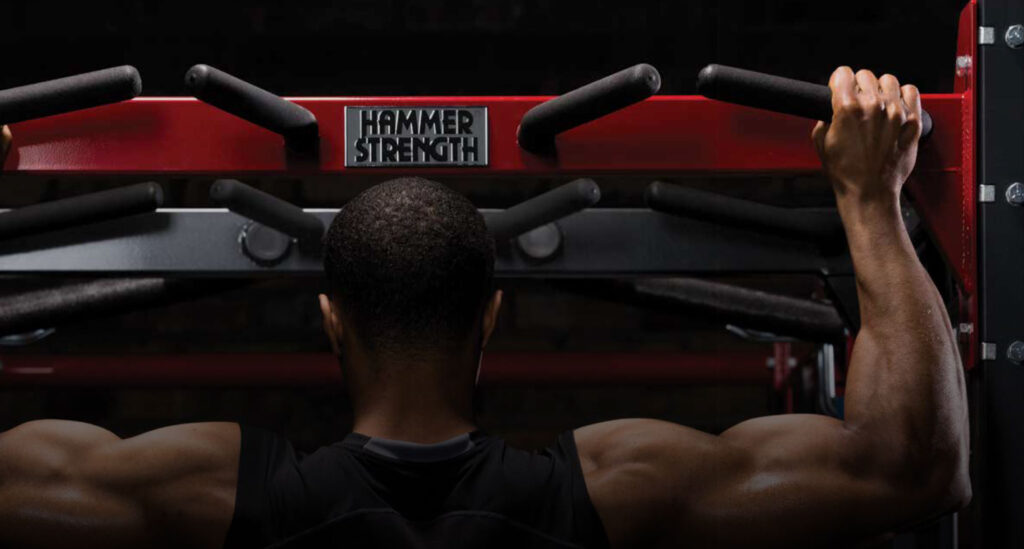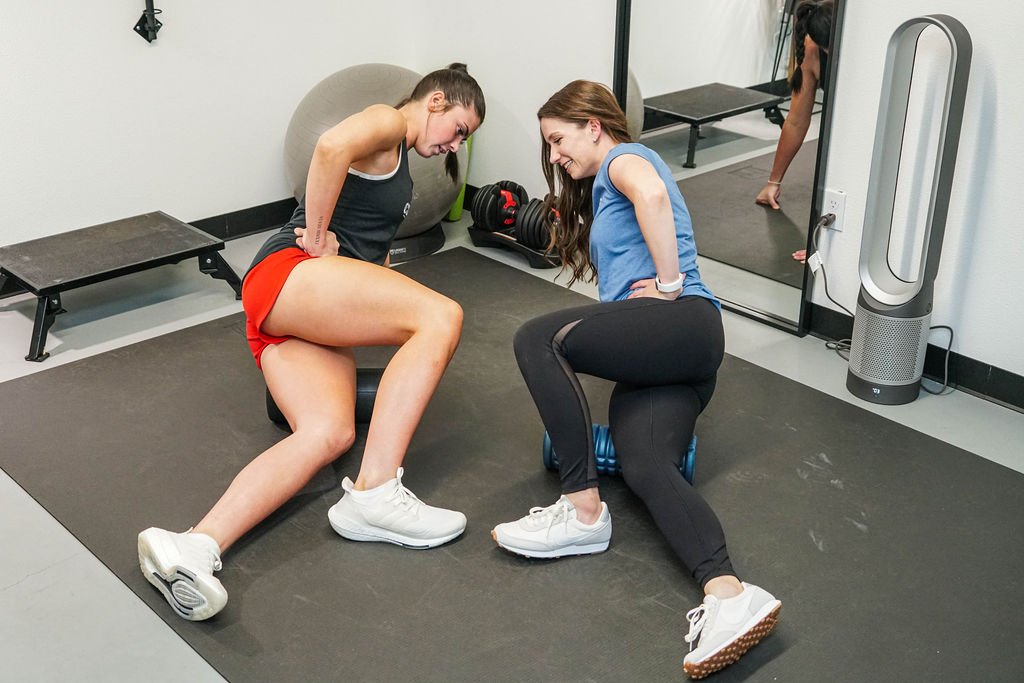The evolution of strength training has been significantly shaped by innovations in equipment design and training philosophies. This article explores the impact of Hammer Strength, a pioneer in the fitness industry, on modern strength training techniques and the future direction of equipment design. By understanding the principles behind Hammer Strength’s approach, fitness enthusiasts and professionals can enhance their training methods, promote safety, and foster community engagement.
In addition, the article addresses key trends such as technological integration, personalization, and sustainability in strength training. Readers will gain insights into how these developments can improve their fitness journeys and prepare them for the next generation of strength training practices.
In this article you will find:
The Vision Behind Hammer Strength Innovation
In 1989, Gary Jones introduced a paradigm shift in the world of fitness with the founding of Hammer Strength. This innovative approach was driven by a clear vision: to create equipment that not only enhances physical performance but also fosters a deeper connection between the user and their training. The essence of Hammer Strength lies in its commitment to strength training, emphasizing the importance of natural movement patterns and biomechanical efficiency.
Understanding Biomechanics in Strength Training
At the core of Hammer Strength’s philosophy is the recognition that every individual has unique biomechanics. This understanding led to the development of equipment that accommodates a variety of body types and movement styles. Instead of a one-size-fits-all approach, Hammer Strength designs focus on:
- Natural Movement: Equipment is engineered to mimic the body’s natural movements, ensuring that users engage muscles effectively and safely.
- Adjustability: Machines are designed with adjustable features that allow users to customize their workout experience based on their specific needs and goals.
- Stability: The design emphasizes stability during exercises, which is crucial for maximizing performance and minimizing injury risks.
Innovative Equipment Design
Hammer Strength’s commitment to innovation is evident in its cutting-edge equipment design. By prioritizing functionality and user experience, the brand has created a range of machines that are not only effective but also enjoyable to use. Key design elements include:
- Ergonomic Features: Each piece of equipment is designed with the user’s comfort in mind, reducing strain and enhancing performance.
- Durability: Made from high-quality materials, Hammer Strength machines are built to withstand the rigors of intense training, ensuring longevity and reliability.
- Intuitive Interface: User-friendly designs make it easy for individuals of all fitness levels to engage with the equipment confidently.
The Impact of Hammer Strength on Fitness Culture
The vision behind Hammer Strength extends beyond equipment; it has significantly influenced fitness culture as a whole. By advocating for strength training as a crucial component of overall fitness, Hammer Strength has:
- Encouraged Inclusivity: The brand has inspired a diverse range of individuals to embrace strength training, breaking down stereotypes that it is only for elite athletes.
- Fostered Community: Hammer Strength facilities often become hubs for fitness enthusiasts, promoting camaraderie and shared goals among users.
- Advanced Training Techniques: The focus on proper form and technique has elevated training standards across the industry, leading to better outcomes for users.
Through its visionary approach, Hammer Strength has not only transformed strength training equipment but has also reshaped the mindset surrounding strength training itself. As we explore the impact of these innovations on modern training techniques, it becomes clear that Hammer Strength’s legacy is one of empowerment and excellence in fitness.
For more insights on innovative fitness equipment and training methodologies, visit Hammer Strength’s official website.
Impact on Modern Strength Training Techniques
The introduction of Hammer Strength in 1989 by Gary Jones marked a significant turning point in strength training techniques. Its innovative designs and focus on biomechanical principles have not only influenced the development of new equipment but have also transformed how trainers and fitness enthusiasts approach strength training today. This section explores the profound impact Hammer Strength has had on modern strength training techniques.
Integration of Functional Training
One of the most notable impacts of Hammer Strength is the integration of functional training into strength workouts. Functional training emphasizes movements that replicate everyday activities, enhancing strength in a way that is applicable to real-life scenarios. Hammer Strength equipment is designed to support these functional movements, allowing users to:
- Enhance Coordination: Exercises performed on Hammer Strength machines promote better coordination and balance by mimicking natural body movements.
- Build Core Stability: Many machines incorporate core stabilization elements, crucial for improving overall strength and preventing injuries.
- Increase Mobility: Functional movements encourage greater range of motion, which is essential for effective strength training.
Shift Towards Personalized Training Regimens
The rise of Hammer Strength has also catalyzed a shift towards personalized training regimens. Fitness professionals now recognize that each individual has unique fitness needs, and Hammer Strength equipment facilitates tailored training programs. Key aspects of this personalization include:
- Adjustable Settings: Hammer Strength machines often feature adjustable settings that allow users to customize the weight, range of motion, and angle of exercises to fit their individual biomechanics.
- Variety of Equipment: The diverse range of machines allows trainers to design workouts that target specific muscle groups or address particular fitness goals.
- Progress Tracking: Many modern Hammer Strength machines come equipped with digital interfaces that help track performance metrics, enabling users to monitor their progress and adjust their training accordingly.
Emphasis on Safety and Injury Prevention
Safety is a paramount concern in any fitness regimen, and Hammer Strength has made significant strides in promoting safe training practices. The design of their equipment reflects a commitment to injury prevention through features such as:
- Ergonomic Design: Machines are crafted to reduce undue stress on joints and muscles, encouraging proper form and technique.
- Guided Movements: Many machines offer guided movements that help users maintain correct posture, minimizing the risk of injury during workouts.
- Durable Materials: The use of high-quality materials ensures that equipment can withstand heavy use, reducing the likelihood of malfunction or accidents.
Impact on Group Training and Fitness Communities
The influence of Hammer Strength extends into the realm of group training and fitness communities. The accessibility and user-friendly nature of Hammer Strength equipment have encouraged more people to participate in strength training, fostering a sense of community in fitness environments. Key contributions include:
- Inclusive Training Environments: Hammer Strength machines cater to individuals of all fitness levels, promoting inclusivity in strength training.
- Community Engagement: Gyms that feature Hammer Strength equipment often host group training sessions, encouraging camaraderie among participants.
- Education and Training: The presence of Hammer Strength equipment has led to increased education around strength training techniques, empowering users to take charge of their fitness journeys.
In summary, the impact of Hammer Strength on modern strength training techniques is profound and multifaceted. By integrating functional training, promoting personalized regimens, emphasizing safety, and fostering community, Hammer Strength continues to shape the fitness landscape. As we transition to exploring how Hammer Strength inspires the next generation of fitness leaders, it’s clear that its influence is far-reaching and enduring.
For further insights on modern strength training techniques, consider visiting ACE Fitness, a reputable source for fitness education and training resources.
Inspiring the Next Generation of Fitness Leaders
As Hammer Strength continues to shape the fitness landscape, it plays a crucial role in inspiring the next generation of fitness leaders. Gary Jones’ vision not only revolutionized strength training but also cultivated a culture of mentorship, innovation, and community engagement within the fitness industry. This section delves into how Hammer Strength fosters leadership among fitness professionals and empowers individuals to become influential advocates for health and wellness.
Mentorship Programs and Educational Initiatives
Hammer Strength is deeply committed to education and mentorship, recognizing that the future of fitness relies on well-informed leaders. The brand supports various mentorship programs and educational initiatives aimed at developing the skills and knowledge of aspiring fitness professionals. These programs often include:
- Workshops and Certifications: Hammer Strength offers specialized workshops and certification programs that teach participants about advanced strength training techniques, equipment usage, and program design.
- Collaborations with Educational Institutions: Partnering with universities and colleges, Hammer Strength provides resources and support for academic programs focused on exercise science and kinesiology.
- Internship Opportunities: By offering internships, Hammer Strength gives aspiring trainers hands-on experience in real-world settings, enhancing their practical skills and industry knowledge.
Promoting Inclusivity and Diversity in Fitness Leadership
Inspiring a diverse range of individuals to become fitness leaders is a core tenet of Hammer Strength’s mission. The brand actively promotes inclusivity within the fitness community, encouraging leaders from various backgrounds to contribute their perspectives. Key initiatives include:
- Scholarships for Underrepresented Groups: Hammer Strength offers scholarships to support individuals from underrepresented communities pursuing careers in fitness and health.
- Diversity Workshops: Hosting workshops that address the importance of diversity in fitness leadership, Hammer Strength fosters an environment where different voices and experiences are valued.
- Community Engagement Programs: By engaging with local communities, Hammer Strength empowers individuals to take on leadership roles within their neighborhoods, promoting health and fitness.
Utilizing Technology to Foster Leadership Skills
In an increasingly digital world, Hammer Strength harnesses technology to support the development of fitness leaders. The integration of technology into training programs has several benefits:
- Online Training Platforms: Hammer Strength provides online resources and platforms where aspiring trainers can access educational content, connect with industry experts, and participate in virtual workshops.
- Social Media Engagement: By encouraging fitness leaders to share their journeys and insights on social media, Hammer Strength creates a community of engaged professionals who can learn from one another.
- Data-Driven Insights: The use of technology allows for the collection and analysis of performance data, enabling trainers to refine their approaches and develop effective training methodologies.
Building a Legacy of Leadership through Community Initiatives
Beyond individual training, Hammer Strength is dedicated to building a legacy of leadership through various community initiatives. These initiatives focus on fostering a culture of health and fitness, thereby inspiring the next generation of leaders:
- Fitness Challenges and Events: Hammer Strength organizes community fitness challenges and events that encourage participation and promote a healthy lifestyle among all ages.
- Collaborations with Nonprofits: By partnering with nonprofit organizations, Hammer Strength supports initiatives aimed at improving community health, providing resources, and creating opportunities for leadership development.
- Public Speaking Engagements: Fitness leaders associated with Hammer Strength are often invited to share their knowledge at conferences and events, inspiring others to pursue careers in fitness.
Through these multifaceted initiatives, Hammer Strength not only inspires the next generation of fitness leaders but also cultivates a vibrant community committed to health and wellness. As we move forward, the legacy of Hammer Strength will continue to shape the future of fitness leadership, paving the way for innovative approaches and inclusive practices in the industry.
To learn more about Hammer Strength’s commitment to developing fitness leaders, visit Hammer Strength’s official website.
The Future of Strength Training and Equipment Design
The landscape of strength training is rapidly evolving, and as we look toward the future, the role of innovative equipment design is becoming increasingly critical. With advancements in technology, shifts in training philosophies, and a growing emphasis on personalized fitness experiences, the future of strength training promises to be dynamic and transformative. This section explores the trends and innovations that will shape the future of strength training and equipment design.
Technological Integration in Strength Training
As technology continues to advance, its integration into strength training is set to revolutionize how individuals engage with fitness. Key technological trends include:
- Smart Equipment: The rise of smart fitness devices equipped with sensors and connectivity features allows users to track their performance metrics in real-time, providing valuable insights for improving their training.
- Virtual Reality (VR) and Augmented Reality (AR): These technologies offer immersive training experiences, allowing users to engage in strength workouts in virtual environments, which can enhance motivation and enjoyment.
- Wearable Fitness Technology: Devices such as smartwatches and fitness trackers enable users to monitor heart rate, calories burned, and other key metrics, helping them make data-driven decisions in their training.
Personalized Training Experiences
Future strength training equipment will increasingly focus on personalization, catering to individual needs and preferences. This trend is driven by a growing understanding of the unique fitness requirements of each user. Innovations in personalized training include:
- Adaptive Equipment: Machines that adjust resistance and settings based on the user’s performance and goals will become more prevalent, allowing for a tailored workout experience.
- Customizable Programs: Advanced software will enable users to create personalized training programs that align with their fitness objectives, fitness level, and preferences.
- AI-Powered Coaching: Artificial intelligence will play a significant role in providing users with feedback and recommendations based on their training data, enhancing their workout efficiency.
Focus on Functional and Holistic Training
The future of strength training will place a strong emphasis on functional and holistic training. This approach prioritizes movements that enhance overall physical performance and well-being. Key elements of this trend include:
- Multi-Functional Equipment: The development of versatile machines that can perform multiple exercises will allow users to engage in full-body workouts without the need for numerous separate pieces of equipment.
- Integration of Mind-Body Techniques: Strength training will increasingly incorporate elements of mindfulness and recovery practices, such as yoga and mobility work, to support overall health.
- Community-Oriented Workouts: Future strength training spaces will likely foster community engagement, encouraging group workouts that promote social interaction and motivation.
Sustainability and Eco-Friendly Design
As environmental awareness grows, the fitness industry is responding with a focus on sustainability in equipment design. Innovations aimed at reducing environmental impact include:
- Eco-Friendly Materials: The use of sustainable materials in equipment manufacturing will become more common, reducing the carbon footprint associated with fitness products.
- Energy-Efficient Machines: Equipment that generates energy during use or utilizes renewable energy sources will contribute to a greener fitness environment.
- Recyclable Components: Future designs will emphasize the recyclability of equipment, ensuring that end-of-life products do not contribute to landfill waste.
The future of strength training and equipment design is poised for innovation and growth, driven by technology, personalization, functional training, and sustainability. As these trends continue to evolve, Hammer Strength and other leading brands will play a pivotal role in shaping the next generation of fitness experiences. For more insights on the future of fitness technology, visit Technogym’s official website, a leader in fitness innovation. Hammer Strength, founded by Gary Jones in 1989, revolutionized strength training through innovative equipment that prioritizes natural movement, biomechanical efficiency, and personalization. The brand emphasizes functional training, enabling users to enhance coordination, core stability, and mobility. With a focus on safety and inclusivity, Hammer Strength fosters community engagement and educates fitness leaders through mentorship programs, workshops, and technology integration.
Looking ahead, the future of strength training will be shaped by technological advancements such as smart equipment, AI-powered coaching, and eco-friendly design. These innovations will facilitate personalized training experiences, promote holistic approaches to fitness, and encourage sustainable practices within the industry. For optimal results, fitness enthusiasts and professionals should embrace these trends to enhance their training methodologies and foster a more inclusive fitness environment.




